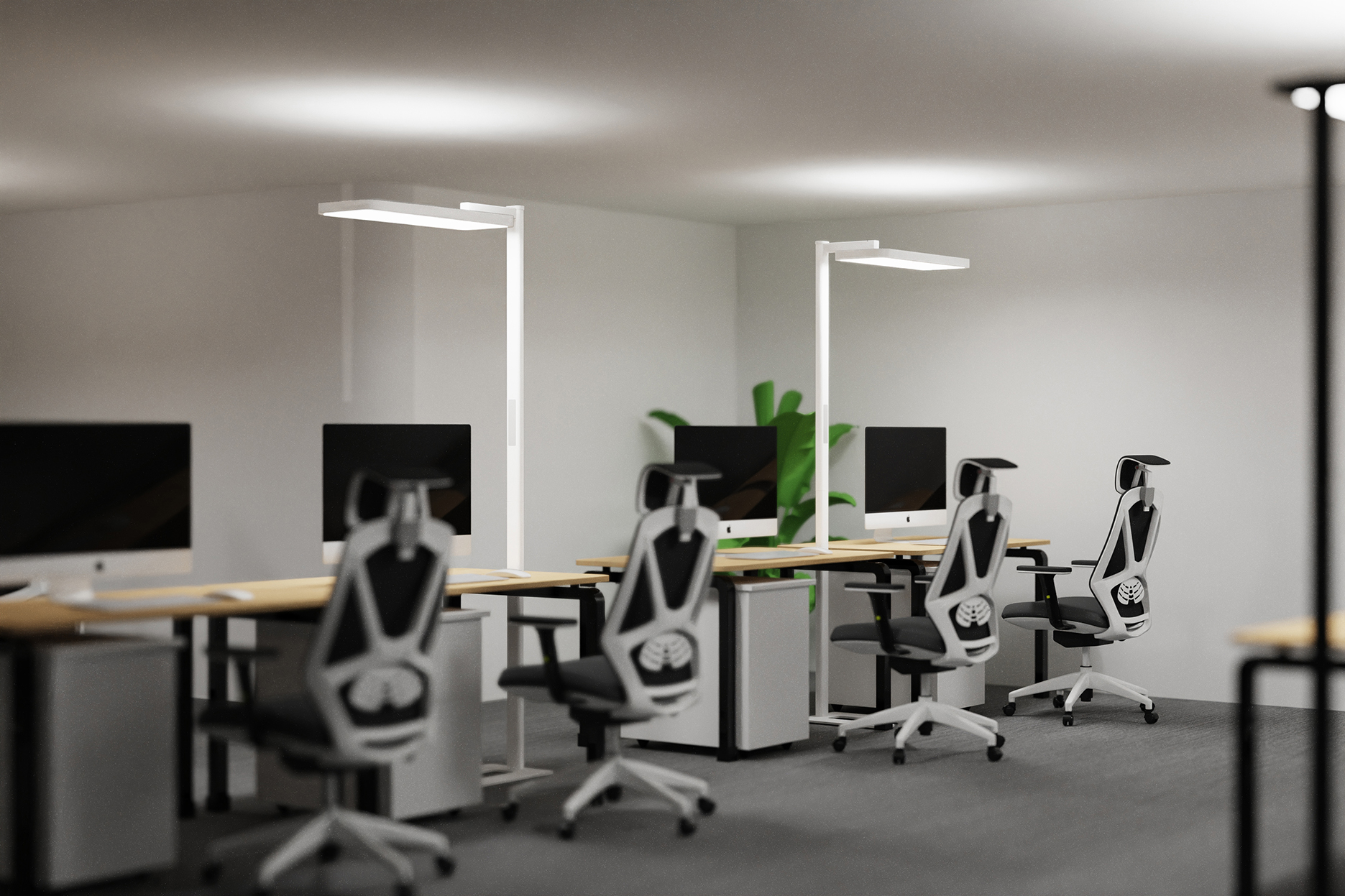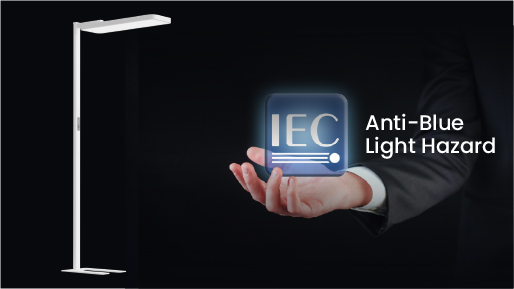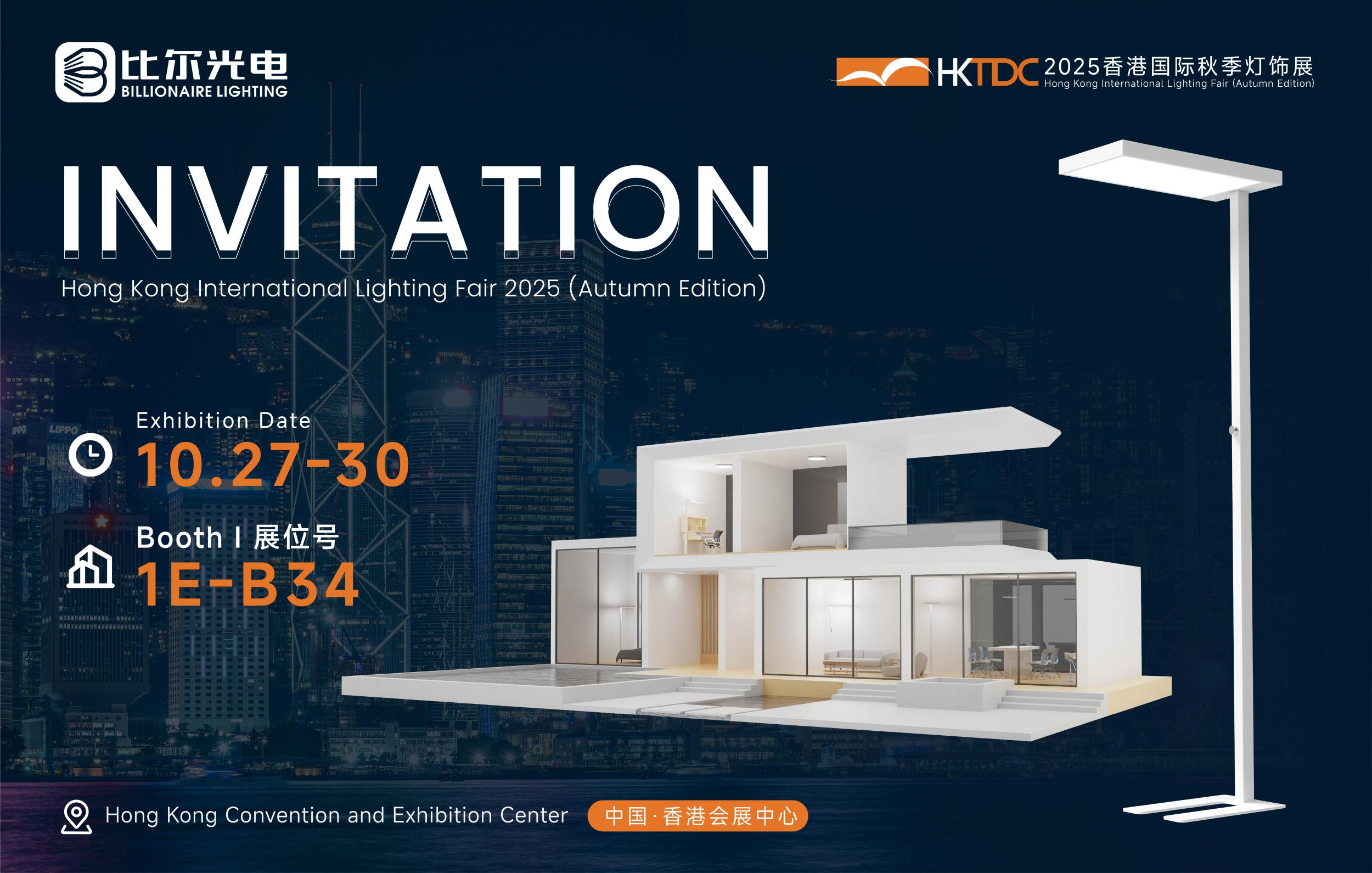1. Introduction
In the modern office landscape, lighting is a crucial factor that significantly impacts employee well - being, productivity, and the overall functionality of the workspace. Office freestanding lamps, also known as floor lamps in an office context, have emerged as versatile and essential lighting solutions. They offer a combination of flexibility, style, and practicality, allowing for customized lighting in various office settings. This comprehensive article will explore the multiple aspects of office freestanding lamps, including their design features, types, benefits, applications, and considerations for selection.
2. Design Features of Office Freestanding Lamps
2.1 Adjustable Heights and Angles
One of the most prominent design features of office freestanding lamps is their adjustability. These lamps are often equipped with mechanisms that enable easy height adjustment. In an open - plan office with workstations of different heights or in areas with diverse seating arrangements, employees can personalize the height of the freestanding lamp. For example, a telescoping pole design allows the lamp to be extended or retracted, ensuring that the light source is at an optimal level for tasks such as reading, writing, or using a computer. This height adjustability is not only beneficial for reducing eye strain but also for promoting proper posture, as employees can position the light to suit their body's needs.
In addition to height, adjustable angles are equally important. The lamp head or shade of an office freestanding lamp can typically be rotated or tilted. This feature empowers users to direct the light precisely where it is required. In a meeting room, a freestanding lamp with an adjustable head can be angled to shine light on a whiteboard, presentation materials, or participants, ensuring clear visibility for all. In individual workstations, the adjustable angle helps in minimizing glare on computer screens by allowing the user to direct the light away from reflective surfaces.
2.2 Lamp Shades and Light Diffusion
The lamp shade of an office freestanding lamp serves multiple purposes. In an office environment, harsh, direct light can be a major source of discomfort and distraction. Lamp shades made of materials such as fabric, frosted glass, or acrylic are commonly used to soften and diffuse the light. Fabric shades create a warm and inviting glow, which can be particularly advantageous in areas where a more relaxed atmosphere is desired, such as break rooms or collaborative workspaces. Frosted glass shades, on the other hand, offer a more even distribution of light, reducing the likelihood of hotspots and providing a consistent level of illumination.
The shape of the lamp shade also plays a crucial role in light distribution. Parabolic - shaped shades are effective in focusing light downwards in a concentrated beam, making them ideal for task lighting at workstations. Cylindrical shades, meanwhile, provide a more 360 - degree diffusion of light, which can be useful for ambient lighting in larger office areas. Some lamp shades are designed with specific patterns or textures to further control the direction and quality of the light, enhancing the overall lighting experience in the office.
2.3 Material Selection for Durability and Aesthetics
Office freestanding lamps are constructed from a variety of materials, each chosen for its durability and aesthetic appeal. Metal is a popular choice for the frame and base of these lamps. Aluminum, for example, is lightweight yet strong and has excellent heat - dissipation properties. Since many modern office freestanding lamps use energy - efficient LED bulbs that generate some heat during operation, effective heat dissipation is crucial for the long - term performance of the lamp. Steel is another common metal used, offering even greater strength and the ability to withstand the rigors of a busy office environment.
The base of the freestanding lamp is designed to be stable, often with a weighted construction. This prevents the lamp from tipping over, especially in areas where there is a lot of movement around the workspace. Wood is also used in some designs, adding a touch of warmth and elegance to the office decor. However, when using wood, it is important to ensure that it is properly treated to resist wear and tear. High - quality plastics may be incorporated into the design for certain components, such as lamp shades or adjustable joints, as they can be molded into various shapes and are often cost - effective.
2.4 Cord Management and Installation Ease
In an office, where cables and cords can quickly become a safety hazard and an eyesore, proper cord management is essential. Many office freestanding lamps are designed with cord - management features. Some lamps have built - in channels or grooves along the pole or base where the cord can be neatly routed. This keeps the cord out of the way, reducing the risk of tripping accidents. Cord clips or ties may also be included to further organize the cord and keep it tidy. Additionally, some freestanding lamps are designed to be easily installed, with simple plug - and - play mechanisms or mounts that can be attached to the floor or wall with minimal effort.
3. Types of Office Freestanding Lamps
3.1 Task - Oriented Freestanding Lamps
Task - oriented office freestanding lamps are specifically designed to provide focused light for tasks such as reading, writing, and using a computer. These lamps typically have a high - intensity light source, often an LED bulb, and are equipped with features to direct the light precisely onto the work area. They often have adjustable necks or heads, allowing for easy positioning. For example, a floor lamp with a long, flexible gooseneck and a small, focused lampshade can be placed next to a desk. The user can bend the gooseneck to direct the light exactly onto the documents or the computer screen, reducing eye strain and enhancing productivity. Some task - oriented freestanding lamps also come with additional features like magnifying lenses, which can be beneficial for employees who need to work on detailed tasks such as proofreading or design work.
3.2 Ambient Lighting Freestanding Lamps
Ambient lighting office freestanding lamps are used to create a general, overall illumination in the office space. They are not meant to provide intense, focused light but rather to fill the room with a soft, diffused glow. These lamps often have larger lampshades that scatter the light in all directions. A common design for ambient lighting freestanding lamps is the torchiere style, which directs light upwards towards the ceiling. The light then bounces off the ceiling, creating a warm, indirect light that fills the room. In an open - plan office, an ambient lighting freestanding lamp placed in a corner can create a more inviting and comfortable atmosphere. The soft light can also make the space feel more spacious. Some ambient lighting freestanding lamps come with dimming features, allowing users to adjust the brightness according to the time of day or the desired mood.
3.3 Multi - Function Freestanding Lamps
Multi - function office freestanding lamps combine the features of task and ambient lighting. These lamps are designed to be versatile, meeting the various lighting needs of an office space. For example, a freestanding lamp may have a main body that provides ambient light, with an additional adjustable arm or head that can be used for task lighting. This type of lamp is ideal for areas that serve multiple purposes, such as a home office that also functions as a relaxation area. Some multi - function freestanding lamps also come with additional features like USB ports for charging electronic devices or built - in speakers for audio functionality. In a modern office environment, where employees need to be able to adapt to different tasks and activities, multi - function freestanding lamps offer a convenient and practical lighting solution.
4. Benefits of Office Freestanding Lamps
4.1 Enhanced Productivity
Proper lighting is directly linked to employee productivity. Office freestanding lamps, especially task - oriented ones, ensure that employees have sufficient, well - directed light on their work surfaces. When employees can see clearly, they are able to perform tasks more accurately and efficiently. For example, in a data - entry job, a well - placed freestanding lamp can reduce the time it takes to input information by providing clear illumination of the source documents. In addition, the ability to adjust the height and angle of the lamp allows employees to customize the lighting to their specific needs, further enhancing their comfort and productivity.
4.2 Improved Comfort and Well - being
Good lighting also contributes to employee comfort and well - being. Harsh, glaring light can cause eye strain, headaches, and fatigue. Office freestanding lamps with proper light diffusion and adjustable brightness levels help to create a more comfortable working environment. The use of warm - toned light in areas where employees take breaks or have informal meetings can reduce stress and promote relaxation. In addition, the ability to control the lighting in their immediate workspace gives employees a sense of control, which can improve their overall job satisfaction.
4.3 Energy Efficiency
Many modern office freestanding lamps use energy - efficient LED technology. LEDs consume significantly less electricity compared to traditional incandescent or fluorescent bulbs. This not only reduces the energy consumption of the office but also lowers electricity bills. In addition, LED bulbs have a much longer lifespan, reducing the need for frequent bulb replacements. Some office freestanding lamps also come with features such as motion sensors or timers, which can further optimize energy usage. For example, a freestanding lamp with a motion sensor can automatically turn off when no one is in the area, saving energy and reducing costs.
4.4 Aesthetic Appeal
Office freestanding lamps can enhance the aesthetic appeal of the office space. With a wide range of design options available, from modern and sleek to traditional and elegant, these lamps can complement the existing office decor. A well - chosen freestanding lamp can become a focal point in the office, adding a touch of style and personality. In addition, the use of different materials and colors in the design of the lamp can contribute to the overall visual harmony of the space.
5. Applications of Office Freestanding Lamps
5.1 Individual Workstations
At individual workstations, office freestanding lamps can provide essential task lighting. The adjustable height and angle features allow employees to direct the light precisely onto their desks, whether they are working on a computer, reading documents, or writing. The ability to customize the lighting to their specific needs helps employees to work more comfortably and efficiently. In addition, the option to dim the light or adjust the color temperature can create a more personalized work environment.
5.2 Meeting Rooms
In meeting rooms, office freestanding lamps play a crucial role in providing both task and ambient lighting. The adjustable angle feature enables the lamp to be directed towards a whiteboard, presentation materials, or participants, ensuring that everyone can see clearly. The ability to adjust the brightness and color temperature can also be used to create different atmospheres for different types of meetings. For example, a brighter, cooler light may be suitable for a brainstorming session, while a warmer, dimmer light can be used for a more relaxed, collaborative meeting.
5.3 Break Rooms and Lounge Areas
Break rooms and lounge areas require a more relaxed and comfortable lighting environment, and office freestanding lamps can deliver just that. The soft, diffused light from these lamps can create a warm and inviting atmosphere, making it a pleasant place for employees to take breaks and socialize. The dimming feature allows for further customization of the lighting, depending on the time of day or the activities taking place in the area.
5.4 Open - Plan Offices
In open - plan offices, office freestanding lamps can be used to create zones and provide both task and ambient lighting. The 360 - degree light distribution of some models can help to evenly illuminate larger areas, while the adjustable features allow for individual customization at each workstation. The ability to integrate these lamps into a smart lighting system also enables office managers to control the lighting across the entire open - plan area, optimizing energy usage and creating a cohesive lighting scheme.
6. Considerations for Choosing Office Freestanding Lamps
6.1 Lighting Requirements
The first step in choosing an office freestanding lamp is to assess the lighting requirements of the space. Consider the type of tasks that will be performed in the area. For areas where detailed visual tasks are carried out, such as graphic design or accounting, a high - intensity task - oriented lamp with adjustable features is essential. In areas where general ambient lighting is more important, like break rooms or corridors, a lamp with good light diffusion and dimming capabilities may be more suitable. Also, take into account the size of the area to be lit, as larger areas may require more powerful lamps or multiple fixtures.
6.2 Style and Aesthetic Compatibility
The style of the office freestanding lamp should complement the overall aesthetic of the office. Whether the office has a modern, contemporary, traditional, or industrial design, there is a freestanding lamp available to match. The color, materials, and shape of the lamp should blend in with the existing furniture, decor, and color scheme. For example, in a modern, minimalist office, a sleek, white - colored freestanding lamp with a simple geometric shape would be a good fit. In a more traditional office, a lamp with a wooden base and a fabric lampshade in a warm, earthy tone may be more appropriate.
6.3 Budget Constraints
Budget is an important consideration when choosing office freestanding lamps. These lamps can vary widely in price, depending on factors such as brand, quality, features, and design. It is important to set a budget and look for lamps that offer the best combination of functionality, style, and energy - efficiency within that budget. While it may be tempting to choose the cheapest option, investing in a higher - quality lamp can often be more cost - effective in the long run, as it is likely to be more durable and energy - efficient.
6.4 Energy - Efficiency Ratings
When selecting an office freestanding lamp, pay attention to the energy - efficiency ratings. Look for lamps with high - efficiency LEDs that are Energy Star - certified or meet other recognized energy - efficiency standards. A higher - efficiency lamp will not only save on energy costs but also contribute to a more sustainable office environment. In addition, consider the lifespan of the LED bulbs, as longer - lasting bulbs will reduce the need for frequent replacements.
7. Maintenance and Care of Office Freestanding Lamps
7.1 Regular Cleaning
Regular cleaning is essential to keep office freestanding lamps in good condition. The lamp shade should be cleaned regularly to remove dust and dirt, which can affect the light output and the appearance of the lamp. Fabric lamp shades can be gently vacuumed using a soft brush attachment. Glass or plastic lamp shades can be wiped clean with a damp cloth. The base and pole of the lamp should also be cleaned periodically to keep them looking presentable. In addition, any cords or cables should be checked for signs of damage or wear during the cleaning process.
7.2 Bulb Replacement
Although LED bulbs have a long lifespan, they may eventually need to be replaced. When replacing the bulbs, it is important to use the correct type of bulb recommended by the manufacturer. Follow the instructions in the lamp's user manual for safe and proper bulb replacement. In some cases, you may need to use a ladder or other tools to reach the bulb, so take appropriate safety precautions. It is also a good idea to keep spare bulbs on hand, especially for high - use lamps, to minimize any disruption in lighting.
7.3 Safety Checks
Periodically conduct safety checks on office freestanding lamps. Check the stability of the lamp, ensuring that the base is firmly on the ground and that the lamp does not wobble. Inspect the cord for any signs of fraying, cracking, or damage. If the cord is damaged, do not use the lamp and replace the cord as soon as possible. Also, check the electrical connections to make sure they are secure. In addition, if the lamp has any adjustable parts, make sure that they are working properly and that the joints are tight.
8. Conclusion
Office freestanding lamps are an integral part of creating a productive, comfortable, and aesthetically pleasing office environment. Their adjustable features, variety of types, numerous benefits, and wide range of applications make them a versatile lighting solution for different office needs. By carefully considering factors such as lighting requirements, style compatibility, budget, and energy - efficiency, businesses can select the most suitable office freestanding lamps for their specific needs. With proper maintenance and care, these lamps can provide reliable and efficient lighting for years to come, contributing to a more sustainable and productive workplace. As technology continues to evolve, we can expect to see even more innovative and improved office freestanding lamp designs in the future, further revolutionizing the way we light our offices.



